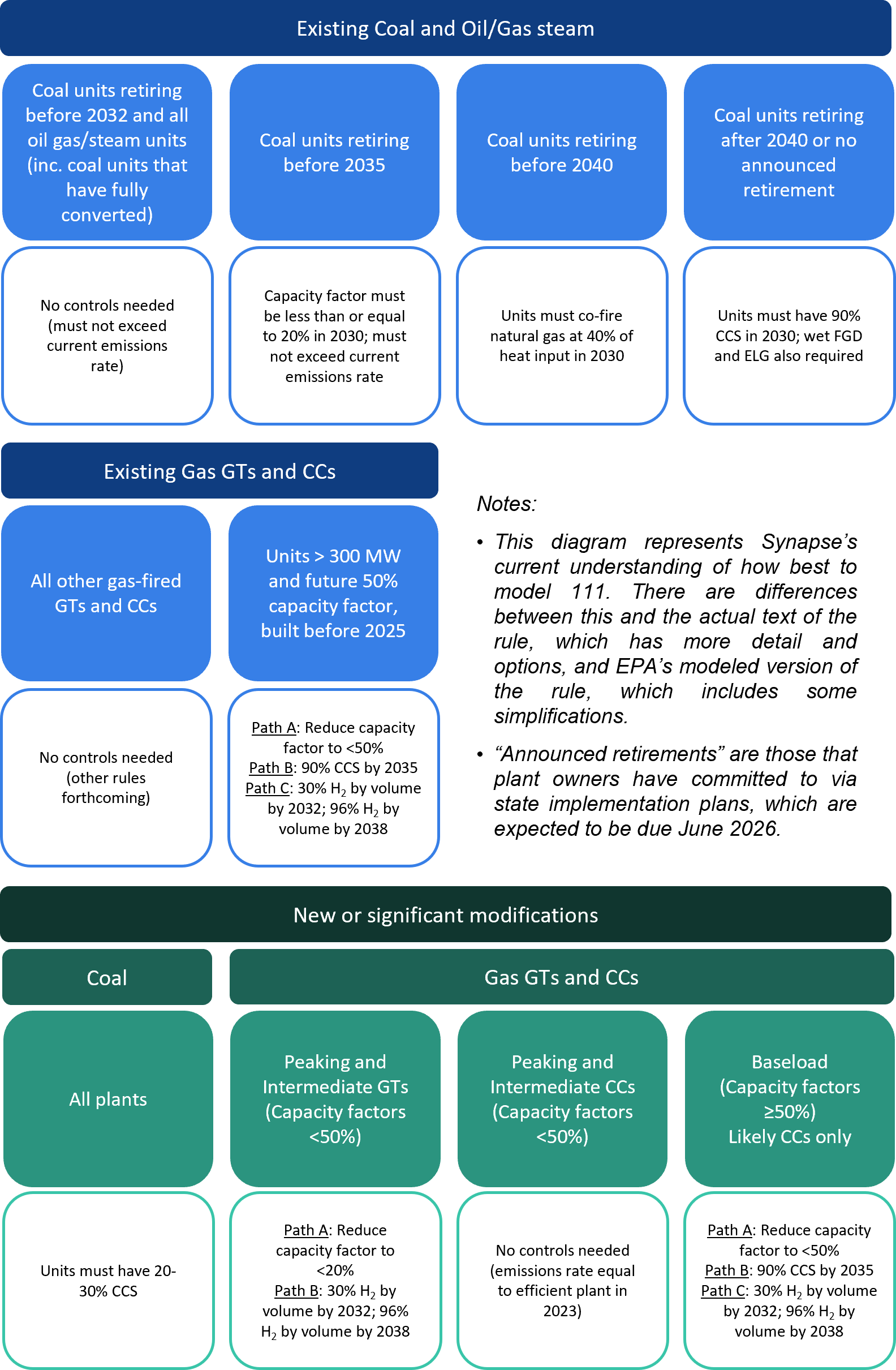EPA Tees Up Latest Set of Greenhouse Gas Standards for Power Plants
This blog post, originally posted on May 23, 2023, was updated on November 13, 2023 to better reflect Synapse's current understanding of the proposed 111 rule.
On May 11, 2023, U.S. EPA issued its latest proposal for Greenhouse Gas Standards and Guidelines for Fossil-Fuel-Fired Power Plants. This historic regulation, issued under Section 111 of the Clean Air Act, aims to curb carbon dioxide and other greenhouse gas emissions from both new and existing power plants burning fossil fuels. EPA is posting the proposed rule in the Federal Register today, May 23, opening 60 days of comments. Following that, EPA is planning to issue a final regulation in summer 2024. This will be followed by state implementation plans, and potentially litigation. It’s going to be a busy time!
About the Proposed Rule
Unlike earlier proposed rulemakings under Section 111 (the 2014 Clean Power Plan and 2018 Affordable Clean Energy rule) the latest proposed rulemaking focuses on technologies such as carbon capture and sequestration (CCS) and hydrogen co-firing to achieve emission reductions. Furthermore, EPA’s rule outlines different pathways that fossil-fuel-powered resources can take to compliance, depending on their planned retirement year and technology type (see figure below). The selection of a retirement year ahead of 2030 will effectively commit a given power plant to a particular compliance pathway.

For existing coal and oil or gas steam plants:
- Existing coal plants do not have to do anything if they are committed to retiring before 2032. This encompasses roughly half of the existing coal fleet.
- Coal plants that are retiring before 2035 must cap their capacity factors at no more than 20 percent, starting in 2030.
- Coal plants that are retiring before 2040 must co-fire with natural gas at 40 percent (by heat input), starting in 2030.
- Coal plants retiring after 2040, and coal plants that do not currently have a retirement date, must install CCS technology that captures 90 percent of CO2 emissions by 2030.
For existing gas-fired combined-cycle and simple-cycle combustion turbines:
- These are only subject to the proposed rule if they (a) are built before 2025, (b) are greater than 300 MW and (c) have planned capacity factors greater than 50 percent. These power plants must either (a) install CCS technology that captures 90 percent of CO2 emissions by 2035 or (b) co-fire with hydrogen at 30 percent (by volume) in 2032 and 96 percent in 2038. In essence, these power plants have three possible pathways to comply: they can install CCS, co-fire with hydrogen, or reduce their capacity factors. As of May 2023, there is ambiguity in the rule about how this 300 MW would be measured.
- All other existing gas turbines (those smaller than 300 MW and/or planned operating capacity factors less than 50 percent) do not have to do anything. About 99 percent of the existing gas turbines in the United States fall into this category.
And for new plants:
- New gas-fired combined-cycle and simple-cycle combustion turbines that expect to operate at capacity factors equal to or greater than 50 percent (aka “baseload” plants) have the same kinds of options as large, frequently operated existing gas turbines: they must either (a) install CCS technology that captures 90 percent of CO2 emissions by 2035 or (b) co-fire with hydrogen at 30 percent in 2032 and 96 percent in 2038.
- New gas-fired simple-cycle combustion turbines that expect to operate at capacity factors lower than 50 percent and higher than 20 percent must co-fire with hydrogen at 30 percent starting in 2032.
- New gas-fired combined-cycle combustion turbines that expect to operate at capacity factors lower than 50 percent do not have to take any action.
- New coal plants are subject to the same 111 regulations that have been on the books since 2015: these plants would be required to install partial CCS, which would effectively reduce the emissions rate of a new coal plant by 20 to 30 percent. No such plants are planned by any major utility in the United States.
Synapse anticipates a flurry of activity starting when EPA posts the proposed rule for comments, and continuing through execution of state implementation plans. We will be working to better understand the regulation, and what it means for consumers and the environment.